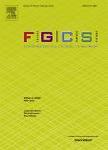版权所有:内蒙古大学图书馆 技术提供:维普资讯• 智图
内蒙古自治区呼和浩特市赛罕区大学西街235号 邮编: 010021

作者机构:Indiana Univ Informat Technol Serv Bloomington IN 47408 USA Tech Univ Dresden D-01062 Dresden Germany Indiana Univ Pervas Technol Inst Bloomington IN 47408 USA Off Vice President Informat Technol Bloomington IN 47408 USA
出 版 物:《FUTURE GENERATION COMPUTER SYSTEMS-THE INTERNATIONAL JOURNAL OF ESCIENCE》 (Future Gener Comput Syst)
年 卷 期:2013年第29卷第1期
页 面:230-240页
核心收录:
学科分类:08[工学] 0812[工学-计算机科学与技术(可授工学、理学学位)]
基 金:NSF University of Chicago [0504075, 0932251] FutureGrid project [NSF0910812] Lilly Endowment IU National Research and Education Network of Germany (DFN) Office of the Vice President for Information Technology at IU ZIH at TU Dresden Division Of Computer and Network Systems Direct For Computer & Info Scie & Enginr Funding Source: National Science Foundation
主 题:High performance computing Lustre Networking Performance analysis
摘 要:Digital instruments and simulations are creating an ever-increasing amount of data. The need for institutions to acquire these data and transfer them for analysis, visualization, and archiving is growing as well. In parallel, networking technology is evolving, but at a much slower rate than our ability to create and store data. Single fiber 100 Gbps networking solutions have recently been deployed as national infrastructure. This article describes our experiences with data movement and video conferencing across a networking testbed, using the first commercially available single fiber 100 Gbps technology. The testbed is unique in its ability to be configured for a total length of 60, 200, or 400 km, allowing for tests with varying network latency. We performed low-level TCP tests and were able to use more than 99.9% of the theoretical available bandwidth with minimal tuning efforts. We used the Lustre file system to simulate how end users would interact with a remote file system over such a high performance link. We were able to use 94.4% of the theoretical available bandwidth with a standard file system benchmark, essentially saturating the wide area network. Finally, we performed tests with H.323 video conferencing hardware and quality of service (QoS) settings, showing that the link can reliably carry a full high-definition stream. Overall, we demonstrated the practicality of 100 Gbps networking and Lustre as excellent tools for data management. (C) 2012 Elsevier B.V. All rights reserved.